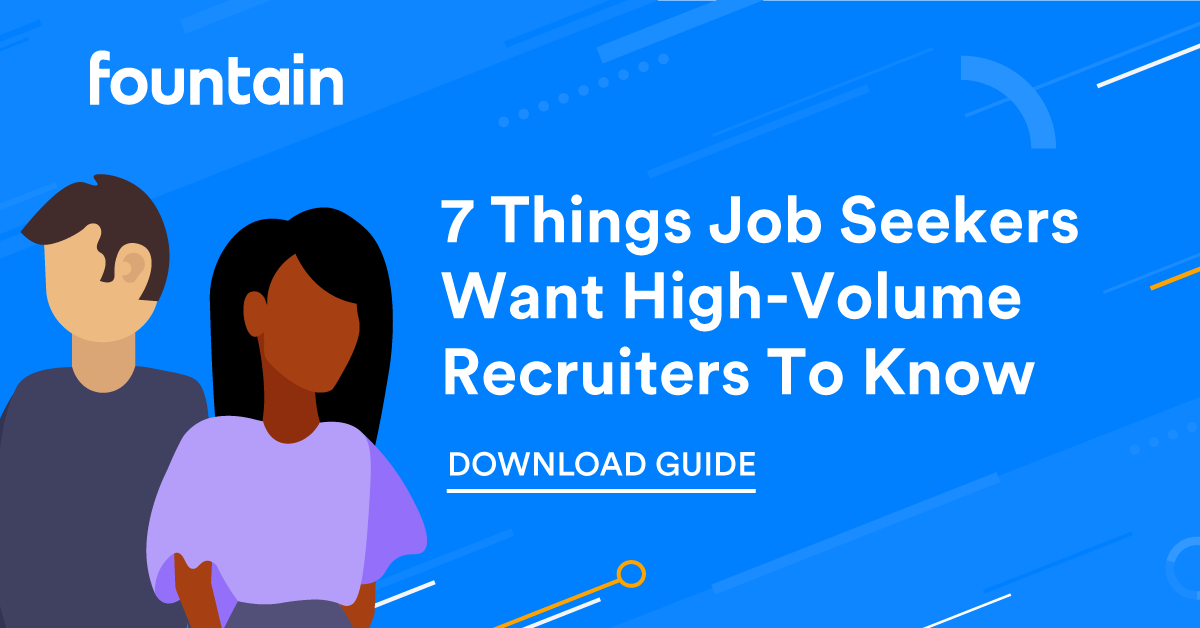Many companies committed to initiating or accelerating their diversity and inclusion efforts in 2020. In order for these initiatives to be pursued and not ring hollow, it’s crucial that they be felt internally.
It’s easy to put out a message that your organization is making diversity a priority, but it’s another to actually make it a priority. If diversity is a key objective for your organization it’s important to define what this objective means to your workers.
These initiatives fall on recruiting teams to execute. Creating a diverse company requires alignment from everyone involved in the hiring process, from start to finish.
Define diversity internally
The first thing organizations need to do when deciding diversity is going to be a priority in the recruitment process is to define what that really means.
We can sometimes fall into the fallacy that diversity in the workplace only revolves around race and gender. It can encompass a variety of characteristics, including but not limited to sex, gender, race, ethnicity, culture, sexual orientation, age, thought, and education.
Diversity in the workplace has been shown to have numerous positive effects. When looking at how inclusive decision-making drives company performance it’s been shown that as the diversity of teams increases so does the chance of making better decisions. In fact, the most diverse teams (age + gender + geographic diversity) made better decisions 87 percent of the time.
Leadership teams can especially benefit from diverse experiences. Executive teams in the top quartile of gender diversity were 21% more likely to outperform on profitability, while ethnic and culturally diverse executive teams were 33% more likely to have industry-leading profitability. Making diversity a priority has been proven to pay off.
Create goals & objectives
The only way to know if changes being made to the hiring process are having an impact is to accurately measure them. Tangible goals will help hold recruiting teams accountable and track real progress being made. Companies just starting to build out a diversity hiring plan should start by focusing on candidate pipelines.
If ethnic diversity is an area where your organization is struggling, implement an initiative to increase the number of ethnically diverse candidates in your candidate pool by a certain percentage (i.e. 50% of all candidates will have diverse ethnic backgrounds).
We’ve already touched on the benefits of a diverse leadership team, and this is where enterprise organizations with 10,000+ employees can really have an impact. Industry-leading companies like Google, Microsoft, and Amazon have all committed to making diversity a priority at the leadership level by implementing recruiting goals and objectives.

Reevaluate the “must-haves” on job descriptions.
A well-known report from Hewlett Packard reported that men apply for a job when they meet at least 60% of the qualifications, but women apply only if they meet 100% of them. Another study from LinkedIn built on this premise, finding that women were also 26 percent less likely to ask for a referral even when they had a connection to someone at the company who was hiring.
The best compromise is to identify what your true “must-haves” are before opening a role, and only including those in the job description. Condensing these will increase the number of diverse candidates you have in your pipeline.
Shorter job application forms also increase your company’s overall click-to-apply rates. We’ve found on the Fountain platform that avoiding jargon and listing only the critical job duties can yield up to a 22.5% apply rate.
Create an equal opportunity hiring statement
An equal opportunity hiring statement typically goes at the end of job postings. It’s a clear way to communicate the company does not discriminate, and goes something like:
“Fountain is proud to be an Equal Opportunity Employer. We welcome applicants of any educational background, gender identity and expression, sexual orientation, religion, ethnicity, age, socioeconomic status, disability, and veteran status.”
Most job postings include similar messaging and if you don’t already have an equal employment opportunity (EEO) statement, finding a template online is a great place to start. These are important messages to have but often come across as generic.
Customize your EEO so when applicants are reading your job posting, it feels like it’s coming from a person and not a corporation. Finish the statement above with a message like this to make it feel more human:
“Even if you do not meet all the requirements above, we still encourage you to apply for this position. While we try to be thorough with our prerequisites, not everything about you as a candidate can be condensed into a list of bullet points. What do you have to lose?”
A unique and inclusive EEO statement is good for your employer branding and is the right way to communicate your commitment to diversity and inclusion externally.

